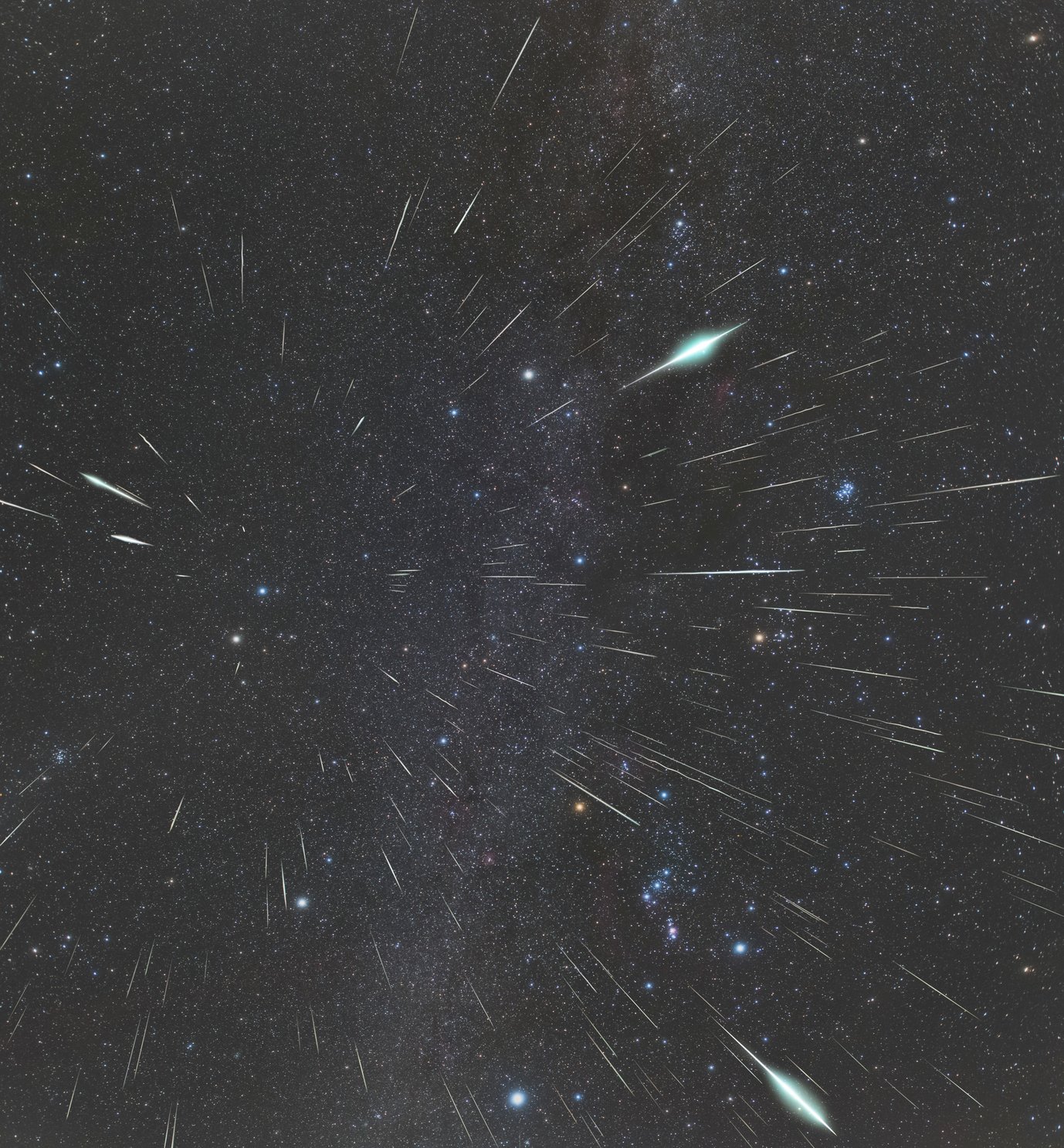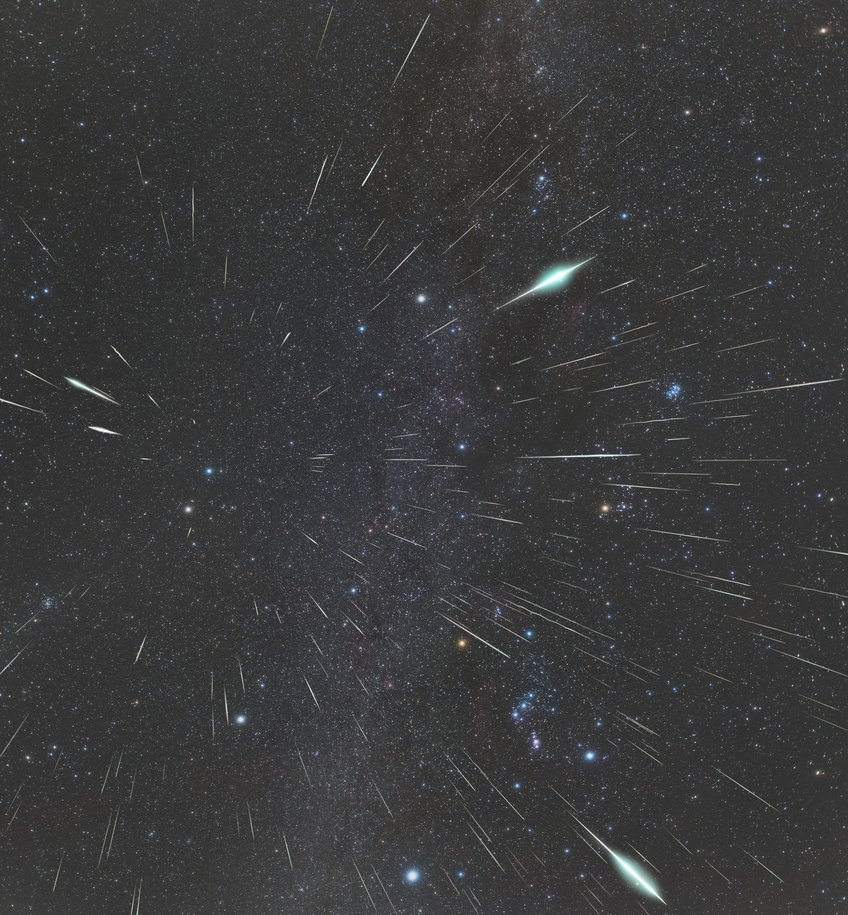Geminids: Meteors before Christmas
Shooting star season is not only in mid-August, but also in mid-December! The Geminids, which appear to come from the namesake constellation Gemini, offer a reliable winter show of shooting stars - this year without any disturbance by the Moon. Only the weather has to play along...
The Geminids are in no way inferior to their summer counterpart, the Perseids: They are a reliable, abundant meteor shower. It seems as if they come from the constellation Gemini (the Twins), which is currently already rising in the evening hours in the eastern night sky. Shooting stars can therefore be expected throughout the night during the typical Geminid period in mid-December.
For those of you who are not familiar with the constellation of Gemini: It is located to the left above Orion in the night sky. The two main stars Castor and Pollux, which are named after a pair of twins from Greek mythology, are particularly bright. The apparent point of emission of the shooting stars (the so-called radiant) is just above Castor, the upper of the two twin stars. However, this is only a perspective effect, similar to driving a car through a snow shower.

The sources of meteor showers are usually comets. They release small mineral particles every time they approach the Sun, which then follow their own orbit. Over the course of decades, a tube forms along the comet's orbit, which is filled with these particles. When the Earth crosses this tube, shooting stars occur more frequently. In the case of the Geminids, however, the body of origin is an asteroid, (3200) Phaethon. It is not completely understood yet how a rocky body can release particles. The latest theory is that Phaeton’s close proximity to the Sun is the cause: Thermal stresses could cause cracks so that particles eventually split off.
This year, the maximum of the Geminids occurs in the evening hours of 14 December at around 8 CET. In general, however, the frequency of shooting stars increases during the night and reaches a peak in the morning hours, as this is when the small particles that cause the meteor fly towards the Earth and do not have to "catch up with it from behind" as they do in the evening. As a result, we can enjoy the Geminids all night long without any significant change in intensity.
New moon will be on 13 December 2023, so the thin crescent Moon will not interfere with observations in the days around the Geminid maximum.
Geminid shooting stars are often bright and intensely coloured. Compared to other meteor showers, the Geminids are relatively slow and only rarely show an afterglow. When the sky is dark, you can see around 50 shooting stars per hour. This value has increased in recent decades and will continue to do so for a while because the orbital geometry of Phaethon is changing: At the moment, its orbit is moving closer to that of the Earth.
